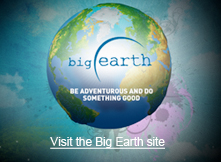Extreme Utah
When Charlie Boorman visited Utah, he had racing his motorcycle on his mind at Utah’s Bonneville Salt Flats. Indeed this must be a thrilling experience, but for most, a fabulous UTAH ROAD TRIP to experience Utah’s jaw-dropping landscapes is equally as exciting and adventurous.
UTAH’S NATIONAL AND STATE PARKS
FEATURE AN ABUNDANCE OF OFFERINGS FOR OUTDOOR ENTHUSIASTS
Home to five National Parks, seven National Monuments, one National Historic Site, two National Recreation Areas, and 43 state parks, Utah offers dramatic settings for any adventure. With ideal experiences for nature lovers and adventure-seekers alike, Utah’s parks include vibrantly colored soaring spires, towering pinnacles, bottomless sandstone canyons, intricately eroded arches and towering walls of sculptured stone. For outdoor aficionados, Utah’s parks are famous for world-class recreation opportunities such as hiking, biking, four-wheeling, fishing, rafting, boating, canyoneering and climbing.
National Parks include:
Arches National Park: Located in southeastern Utah, this desert landscape is accentuated by 2,000 natural stone arches – the largest concentration of natural stone arches in the world. In addition to the famed Delicate Arch, major sites at Arches include Balanced Rock, Skyline Arch, Double Arch, Fiery Furnace and Devil’s Garden. A 40-mile roundtrip drive offers visitors a jaw-dropping journey through this “garden of natural wonders.” Standing silent against the alpine backdrop of the La Sal Mountains, Arches offers a picture perfect backdrop for exhilarating hiking, biking, climbing, camping and other outdoor adventures. www.nps.gov/arch
Bryce Canyon National Park: Not really a canyon, the Bryce amphitheater in southwestern Utah is characterized by its thousands of pillars, columns, windows and hoodoos, all delicately carved by millions of years of erosion by wind and sand. From the edge of the amphitheater, visitors are treated to breathtaking views and displays of color as the natural light changes throughout the day. A 37-mile roundtrip drive through the park includes popular sites such as Sunrise, Sunset, Rainbow, Yovimba and Inspiration Point. Photographers find Bryce Canyon a perfect spot for stunning art photography. Hiking, camping, biking and horseback riding are among the activities offered. www.nps.gov/braca
Canyonlands National Park: Visitors to Canyonlands can view thousands of feet down to the Colorado and Green Rivers or thousands of feet up to the red rock pinnacles, cliffs and spires in Utah’s largest and most diverse national park. Today, the park is comprised of five unique regions, including Island in the Sky, Needles District, The Maze, Horseshoe Canyon and The Rivers. This park in southeastern Utah offers challenging 4×4 roads and whitewater rapids, not for the faint of heart. Other popular activities include climbing, biking, camping and hiking. www.npx.gov/cany
Capitol Reef National Park: Capitol Reef National Park in south-central Utah comprises 378 square miles of colorful canyons, ridges, buttes and monoliths. A rocky wilderness, the park is characterized by sandstone formations, cliffs and canyons. About 75 miles of the long up-thrust called the Waterpocket Fold is preserved within the park boundary, extending like a rugged spine from Thousand Lake Plateau southward to Lake Powell. The Waterpocket Fold features a variety of rock shapes that include Capitol Dome, Hickman Bridge, Grand Wash and Cathedral Valley. In addition to touring the park by car, visitors can bike, camp, climb, hike and ride horses. www.nps.gov/care
Zion National Park: Named by early Mormon pioneers, “Zion” means the “promised land,” which is the perfect way to describe Zion’s peaceful yet dramatic landscape of sculptured canyons and soaring cliffs. The second most popular tourist attraction in the state and the oldest of Utah’s national parks, Zion offers a number of sites of interest including The Narrows, Emerald Pools, Angels Landing and Weeping Rock, all of which are located at spectacular Zion Canyon, carved from the Virgin River. For those who want to venture off the beaten path, both Kolob Canyon and Kolob Terrace are ideal areas in which to explore the backcountry. Hiking, climbing, biking, camping and horseback riding are some of the outdoor activities pursued here. The park features Zion Lodge, a dining room, gift shop and picnic area. www.nps.gov/zion
Other “Must See” Parks include:
Antelope Island State Park: The largest island in the Great Salt Lake, Antelope Island State Park can be accessed by a seven-mile causeway. The park offers stunning views of the Wasatch Mountain range and the island is also home to free-roaming bison, bighorn sheep, deer, pronghorn antelope and many varieties of shore and wading birds. www.stateparks.utah.gov
Cedar Breaks National Monument: Surrounded by Dixie National Forest in the southwestern area of the state, Cedar Breaks National Monument is similar to Bryce Canyon. This monument is an amphitheater on the western edge of the Markagunt Plateau filled with pillars, columns and hoodoos which are particularly vivid because they are concentrated in a small area surrounded by verdant meadows and forest. www.nps.gov, www.nationalparks.org
Dinosaur National Monument: Dinosaur National Monument, in northeastern Utah, shelters more than 2,000 dinosaur bones exposed in a 200-foot-long sandstone wall. The site was discovered in 1909 by paleontologist Earl Douglass. Over 350 million tons of fossils, including full skeletons and previously unknown dinosaur species, were excavated by Douglass’s crew and now reside in museums all over the world. www.nps.gov, www.nationalparks.org
Flaming Gorge National Recreation Area: Situated in the northeastern portion of the state, Flaming Gorge features 207,363 acres of land and water. The area is popular for fishing, hiking, mountain biking, wildlife watching and provides access to the neighboring Ashley National Forest. www.fs.fed.us/r4/ashley
Glen Canyon National Recreation Area: Located in south-central Utah, Glen Canyon National Recreation Area includes world famous Lake Powell, which backs up for more than 186 miles behind the dam that formed it. Visitors can explore nearly 2,000 miles of serpentine shoreline with hundreds of side canyons, inlets and coves. www.nps.gov, www.nationalparks.org
Grand Staircase-Escalante National Monument: Located in south-central Utah, Grand Staircase-Escalante is divided into three areas: the canyons of the Escalante River, the Grand Staircase and the Kaiparowits Plateau. The monument is a vast and rugged region and is intersected by National Scenic Byway 12 (which has earned the federal All American Road designation.) The area provides access to various recreation opportunities in the monument and vicinity.
Monument Valley Navajo Tribal Park: The picturesque Monument Valley Navajo Tribal Park straddles the border of southeastern Utah and Arizona. Goulding’s Trading Post and Museum is a must for movie aficionados as it recreates life in the 1920s and documents the starring roles of Monument Valley’s formations in movies and television through several decades. Movies filmed in the area include “Back to the Future III,” “Forrest Gump” and a number of John Ford’s Westerns. www.discovernavajo.com
Snow Canyon State Park: Situated outside St. George in southwestern Utah, Snow Canyon State Park is best known for its enjoyable hiking through acres of vibrant red Navajo sandstone capped by an overlay of black lava rock. www.stateparks.utah.gov
For more information on Utah, visit www.visitutah.com.
For an idea of what Utah’s national parks offer, visit: http://www.visitutah.com/parks-monuments/mighty5/
Archives
- Show to air soon in the UK November 05, 2013
- Extreme Utah August 21, 2013
- Extreme Wyoming July 25, 2013
- Extreme Texas July 24, 2013
- Working with EagleRider July 19, 2013
- Extreme Chattooga River July 08, 2013
- Extreme North Carolina July 08, 2013
- 4th of July Celebrations – Join Charley in a Google Hangout! July 04, 2013
- Extreme Tall Ships June 28, 2013
- Extreme Boston June 25, 2013
- Extreme Hawaii June 20, 2013
- Launching Extreme Frontiers: USA June 17, 2013
- Welcome to Extreme Frontiers USA June 06, 2013













